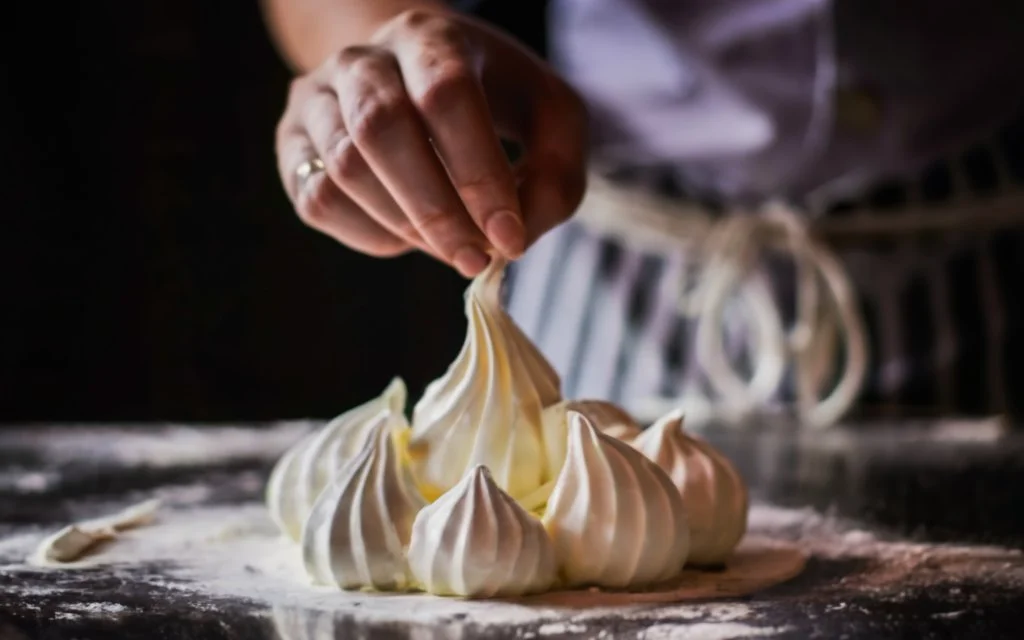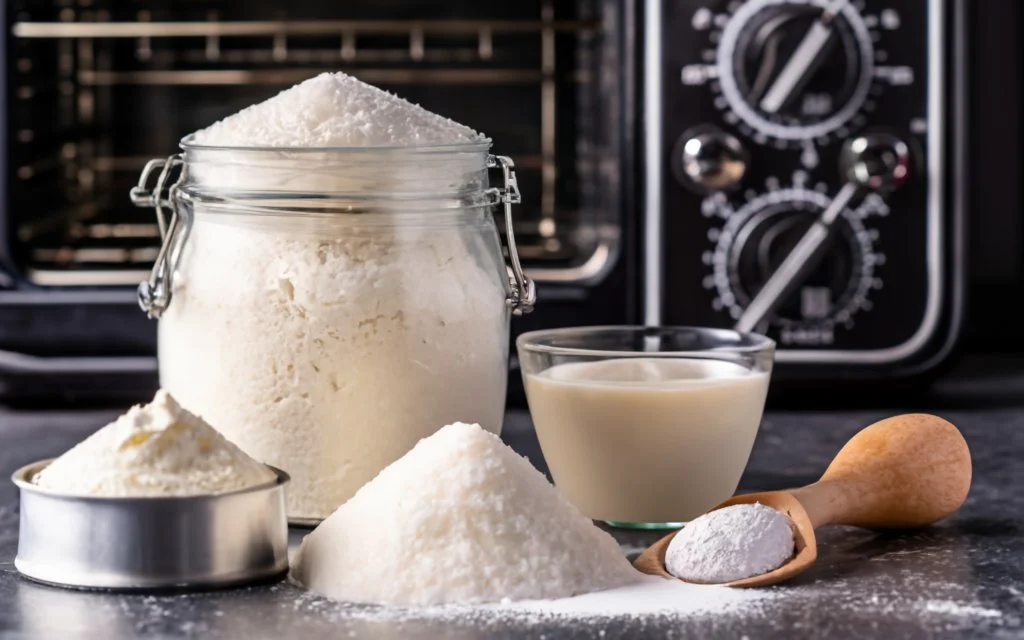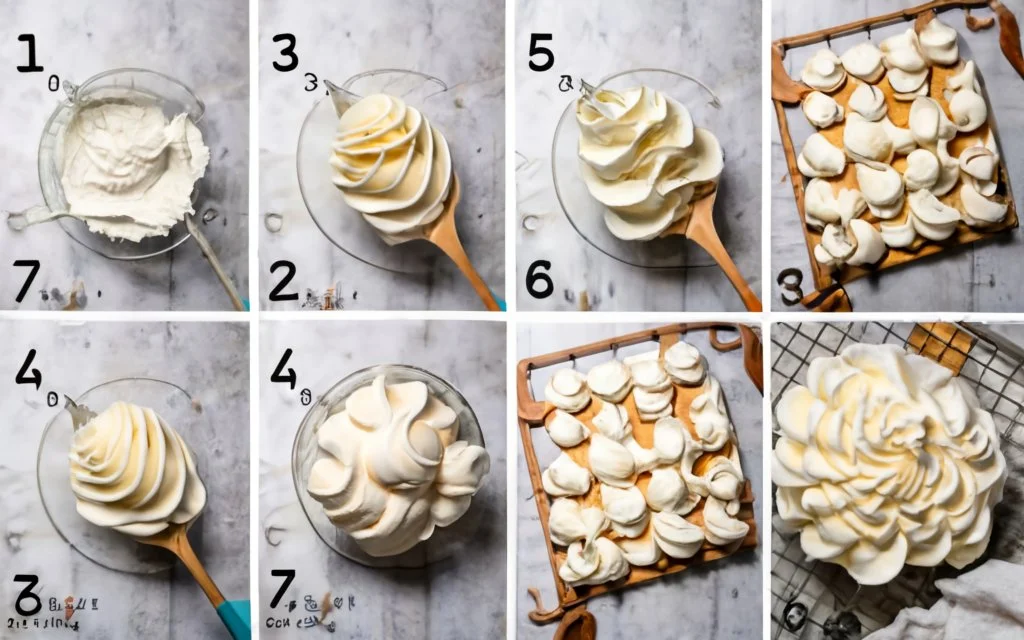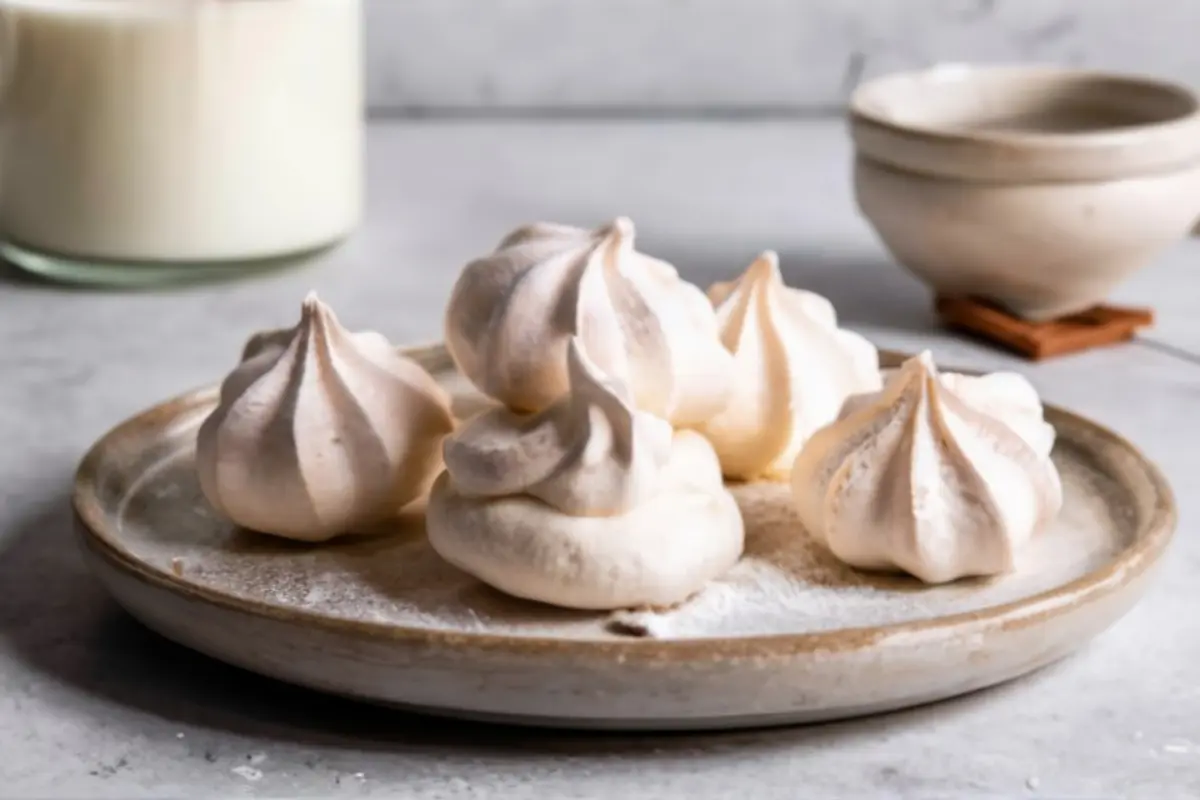Part 1: Introduction to Keeping Meringues White

Understanding Meringues: A Culinary Delight
Discover the secret to keeping meringues white, a culinary challenge that bakers of all levels face. Meringues, at their essence, are a delightful symphony of sugar and egg whites, whipped into a frenzy until they form tall, proud, and glossy peaks. Yet, the science behind maintaining the whiteness of meringues is as fascinating as it is precise. It revolves around air: those tiny bubbles trapped within the protein matrix of egg whites, reflecting light and giving meringues their characteristic glow. For those intrigued by the delicate balance of sweetness and texture in meringues, our Clear Lemon Meringue Pie recipe further explores the art of creating perfect
The Science Behind Meringue Whiteness
Diving deeper into the art and science of meringue, the key to their luminous whiteness lies in how you treat the egg whites. Introducing them to sugar forms a partnership that can either elevate or compromise your dessert. Sugar plays a crucial role in stabilizing the air bubbles, maintaining a delicate balance. Too much sugar added too quickly can deflate your creation before it even has a chance to dazzle.
The Importance of Keeping Meringues White
But why focus so much on keeping meringues white? It’s not solely about aesthetics—though the visual appeal of a pristine white meringue is undeniable. The color, or lack thereof, impacts texture, taste, and the overall eating experience, making each bite feel like a cloud. Achieving that perfect whiteness is a testament to a baker’s skill, a symbol of culinary perfection.
Aesthetic Appeal and Texture
Moreover, the visual appeal of a perfectly white meringue can transform any dessert from ordinary to extraordinary. It’s what elevates a simple treat to the highlight of your dinner party. That flawless whiteness ensures the texture is exactly as desired: crisp on the outside, yet marshmallow-soft within.
As we embark on this journey to mastering the perfect white meringue, remember: it’s not merely about following instructions. It’s about grasping the why and the how, blending science with artistry. Stay tuned as we explore the factors influencing meringue whiteness. Trust me, this is a culinary adventure you won’t want to miss.
Part 2: Factors Affecting Meringue Whiteness

Diving into the heart of our conundrum, several factors play pivotal roles in the quest for the perfect meringue. Understanding these can transform your baking experience, turning “almost-there” attempts into triumphs of culinary skill.
Common Culprit: Sugar Type and Quality
First off, let’s talk sugar. Not all sugars are created equal, especially when it comes to meringues. The type and quality of sugar you use can make or break your dessert. Fine, caster sugar is the hero in this story, dissolving more easily into the egg whites and reducing the risk of those dreaded beige hues. So, when pondering, “How do you keep meringues white?” remember, the sugar you choose is a silent guardian of whiteness. Read more Impact of Different Sugar Types and Their Concentrations on Salted Duck Egg White Based Meringues
Moreover, the integration of sugar into the egg whites needs finesse. Add it gradually, allowing each grain to find its place without overwhelming the delicate structure you’re building. This method not only preserves the airiness but also ensures the sugar is fully dissolved, a critical step towards achieving that dreamy whiteness.
Oven Temperature and Its Impact
Next up, the oven. The temperature at which you bake your meringues is a tightrope walk between drying them out and browning them. Too high, and you’ll watch in despair as your white peaks turn golden, a sign of overcooking. The sweet spot? A low and slow approach, typically around 200°F (93°C), allowing the meringues to dry out gradually, preserving their color and texture.
Additionally, keep an eye on your oven’s hot spots. Rotating the baking sheet halfway through can help ensure an even bake, preventing parts of your meringues from browning before the rest are done.
The Role of Acidity
Lastly, let’s not overlook the role of acidity. A dash of cream of tartar or a squeeze of lemon juice can work wonders. These natural acids do more than just stabilize the egg whites; they’re like a protective shield, keeping your meringues white and bright. By balancing the pH, they ensure that the egg whites reach their full volume potential without succumbing to discoloration.
Incorporating these acids into your recipe is simple yet effective. Just a pinch or a few drops added to the egg whites before you start whipping can make all the difference. It’s a small step, but it’s one that speaks volumes in the quest for whiteness. Read more Effectiveness of enzymes on structural, functional and creep … – NCBI
In conclusion, the path to keeping meringues white is a journey through sugar selection, oven mastery, and the strategic use of acidity. Each element plays a crucial role, and understanding their interplay can elevate your baking game. Stay tuned as we move on to the step-by-step guide to perfect white meringues, where we’ll put these insights into action, ensuring your next batch is as white as freshly fallen snow.
Part 3: Step-by-Step Guide to Perfect White Meringues

Now, let’s get into the nitty-gritty of making those perfect, white meringues. Following these steps can make a world of difference, turning your baking endeavors from good to great.
Preparing the Perfect Base
Firstly, the foundation of any good meringue lies in the egg whites. Ensure they’re at room temperature before you start. Why? Well, room-temperature egg whites whip up fuller and faster, a key to incorporating more air. Consequently, more air means lighter, whiter meringues.
Moreover, ensure your mixing bowl and whisk are impeccably clean. Any trace of fat can thwart your efforts, preventing the egg whites from reaching their full, fluffy potential.
Whipping Techniques for Optimal Whiteness
Now, onto the whipping. Start at a low speed, allowing the egg whites to form small, stable bubbles. As they start to foam, gradually increase the speed. This gradual approach is crucial; it builds a strong meringue structure that’s less likely to collapse or discolor.
Once you reach soft peaks, it’s time for the sugar. Add it gradually, a tablespoon at a time, while continuing to whip. This slow addition ensures the sugar dissolves completely, avoiding grittiness and helping maintain the meringue’s white color.
Baking and Cooling: Preserving the Whiteness
Baking is where the magic happens, but it’s also where things can go awry. The key to keeping meringues white lies in the oven temperature. Bake at a low temperature, around 200°F (93°C), to dry the meringues slowly without browning them. This gentle process is essential for preserving their pristine color.
Furthermore, once baked, don’t rush to take them out of the oven. Turn off the heat, crack the oven door open, and let them cool down gradually. This slow cooling helps prevent cracking and keeps the meringues white.
In essence, the answer to “How do you keep meringues white?” involves careful preparation, meticulous whipping, and controlled baking. By adhering to these steps, you’re well on your way to creating meringues that are as white as snow, ready to impress at any occasion. Stay tuned for advanced tips and tricks that will elevate your meringue-making skills even further.
Part 4: Advanced Tips and Tricks

Elevating your meringue game involves more than just following the basics. Here, we delve into expert advice to ensure your meringues not only stay white but also stand out in both flavor and texture.
Coloring Without Compromising Whiteness
Interestingly, adding a hint of color to your meringues can enhance their visual appeal without compromising their whiteness. Opt for gel or powder food colorings, as they’re more concentrated and less likely to affect the consistency. A tiny bit goes a long way, ensuring your meringues remain vibrant yet white. Read more Why does adding blue food coloring make whipped cream whiter?
Moreover, introducing color gradually while whipping ensures an even distribution, resulting in beautifully tinted meringues that maintain their lightness and texture.
Storage Solutions for Lasting Whiteness
After mastering the bake, proper storage is key to preserving the meringues’ whiteness and crispness. Store them in an airtight container at room temperature. This method shields them from humidity, which can make them sticky and cause discoloration. check out our Ultimate Baking Troubleshooting Guide.
Additionally, placing a desiccant, like silica gel packets, in the container can help absorb any excess moisture, further protecting the meringues from becoming chewy or losing their color.
In conclusion, achieving and maintaining the perfect whiteness of meringues is an art that requires attention to detail at every step. From choosing the right color additives to storing them correctly, each decision plays a crucial role in the outcome. By following these advanced tips and tricks, you’re not just baking; you’re crafting a masterpiece that’s as visually stunning as it is delicious.
Part 5: FAQs
In this section, we address common questions and concerns about making perfect meringues, focusing on maintaining their pristine whiteness and delightful texture.
How long can you store meringues?
Ideally, meringues can be stored for up to two weeks if kept in an airtight container at room temperature. This method ensures they remain dry and crisp, preserving their whiteness and texture.
Can you make meringues on a rainy day?
Humidity is a known foe of meringues. On a rainy day, the extra moisture in the air can make it challenging to achieve the perfect texture. However, using a dehumidifier in your kitchen can help mitigate this issue, allowing you to bake meringues even when the weather isn’t cooperating.
Why do my meringues turn brown?
Meringues turn brown primarily due to excessive heat. Baking them at a lower temperature, around 200°F (93°C), and keeping a vigilant eye on them can prevent browning. Remember, patience is key to keeping meringues white.
Is cream of tartar necessary for meringues?
While not absolutely necessary, cream of tartar can be a game-changer. It helps stabilize the egg whites, increasing their heat tolerance and ensuring they stay glossy and white. Just a pinch can make a significant difference.
Can I use artificial sweeteners in meringues?
Artificial sweeteners often don’t provide the same structural support as sugar, which can affect the meringues’ volume and texture. For best results, stick with fine, caster sugar to ensure your meringues remain stable, white, and delicious.
In wrapping up, the journey to perfect, white meringues is filled with little steps that make a big difference. From the right ingredients to the baking process, each element plays a crucial role. Remember, the question of “How do you keep meringues white?” is answered not just with techniques, but with patience, precision, and a bit of baking magic. Happy baking!

